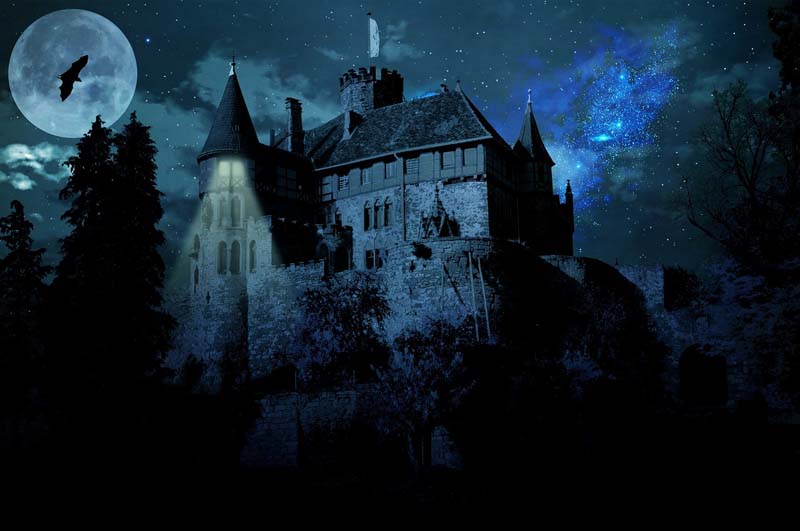
Columbia Icefield Adventure – A Signature Experience between Banff and Jasper National Parks
August 17, 2017The Columbia Icefield, a mass of ice covering a high plateau between Mount Columbia (3,747 meters), the highest point in Alberta, and Mount Athabasca (3,491 m), is located between Banff and Jasper National Parks, along the border between British Columbia and Alberta. It represents the North American Hydrographic Summit.
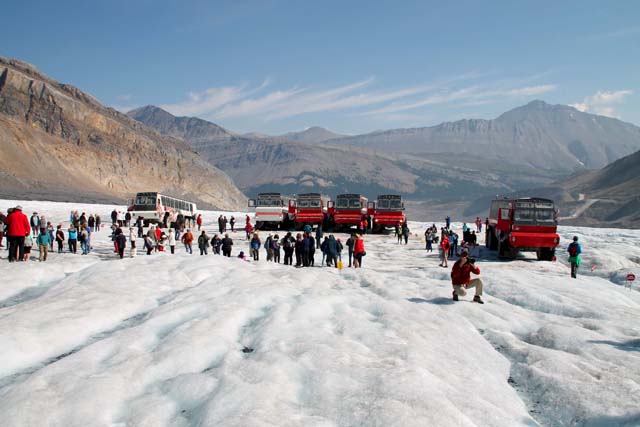
Photographer: Jason Li
It is the “mother of rivers”, and its meltwater supplies the hydrographic networks of the rivers Saskatchewan North and Athabasca, and Columbia River and Fraser River. It is the home to about 30 distinct glaciers, the largest being Saskatchewan and Athabasca.
The Columbia Icefield, the vestige of the great ice shield that once covered most of Canada, is the largest ice accumulation in the Rocky Mountains with an area of some 325 km2 of snow and ice depths of 365 meters. Dendrometric studies reveal that the icefield is progressing and receding in cycles, its last advance occurring around 1840.
The icefield offers a spectacular panorama of wavy white stretches, slender rocky peaks and deep ice caves. The Castleguard Cave extends over 23 km below the field. On its south and north faces, it is lost in wooded valleys.
What to do?
- Get off the Ice Explorer bus and walk on 10,000 year old crystal clear ice
- 215 square kilometres of solid ice and up to 365 meters
- Walk on a glass footbridge suspended 280 meters above the valley to admire the world from above
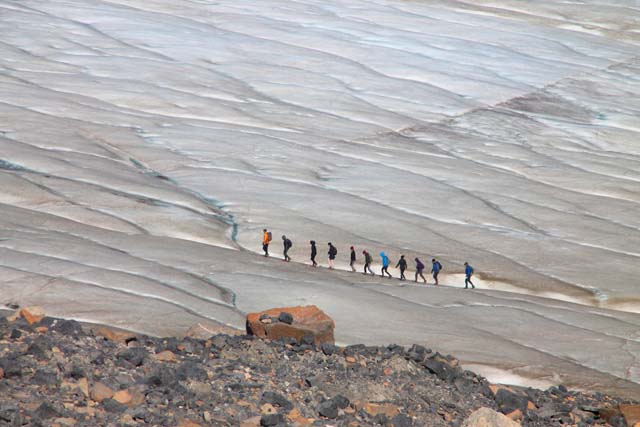
Photographer: Jason Li
Anyone who comes out of the imposing Ice Explorer Brewster on the Columbia Icefield in Jasper National Park is experiencing the same amazing experience. You can breathe the fresh wind of the mountain, your eyes narrowed to the glittering sunlight that reflected on the snow, turned on yourself to admire the immaculate landscape and uttered the same word: “Wow!”

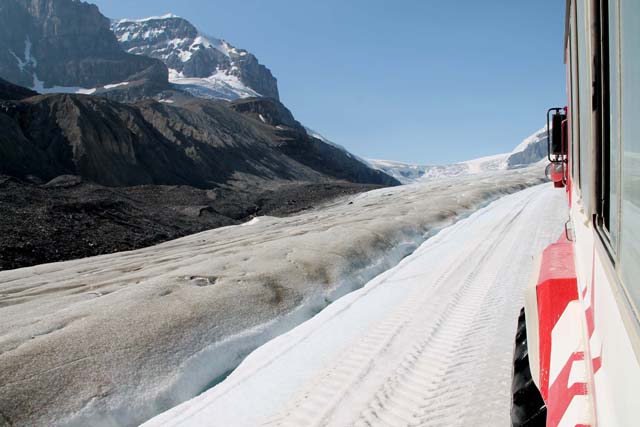
Photographer: Jason Li
Now the show is double with the construction of the suspended Glacier Skywalk. These two unforgettable experiences to live in the heart of the Rockies are not to be missed during a summer trip to the national parks of Jasper and Banff.
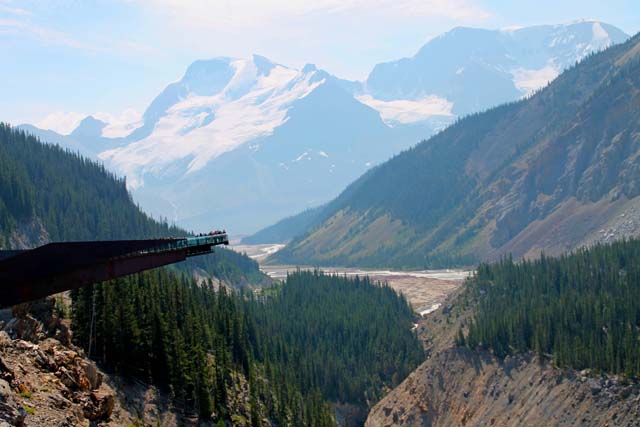
Photographer: Jason Li
The road to the Columbia Icefield is one of the most beautiful in the world, with steep peaks wrapped in prehistoric ice and endless valleys where only wildlife prevails. The highlight of the trip is the Columbia Icefield, where the all-terrain Ice Explorers with their giant wheels advance gently on the glacier to allow you to safely walk on a 10,000-year-old ice-covered expanse of six kilometres and one kilometre wide. Plunge your water bottle into one of the streams to drink the freshest water in the world that would pour into no fewer than three oceans. Walk the cliff-edge interpretation trail to learn more about the post-glacial landscape, and then, take the fresh air!
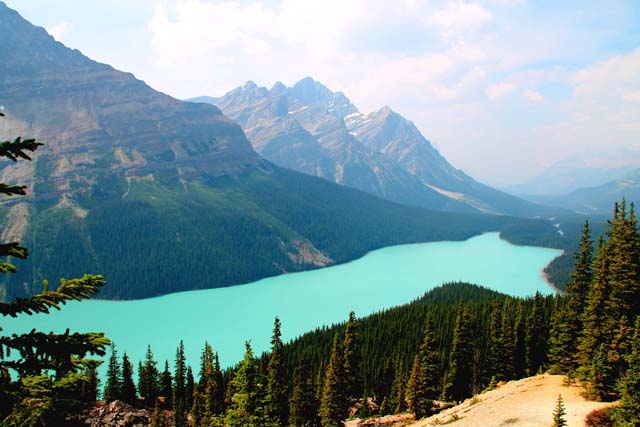
Photographer: Jason Li
The glacier observation platform culminates at 280 meters above the valley. Listen to the sound of the waterfalls, watch the birds fly below you, take a breath of fresh air,
Why you should go?
- Ride on the Athabasca Glacier aboard a giant Ice Explorer to experience the winter climate in the middle of summer.
- Learn more about the evolution of the glacial environment, and then walk on the Glacier Skywalk suspended walkway.
- Combine the “Glacier” adventures with other Brewster excursions, including the cable car to the top of Sulfur Mountain, or a boat cruise on Lake Minnewanka.
- Walk through the Rocky Mountains and snow-capped peaks where chains of glaciers melt to form waterfalls and turquoise lakes.
- Take hiking trails to feel the breathtaking mountain air, admire breathtaking views and wildlife such as deer, elk and moose.
- Explore the Glacier Discovery Centre to discover the history of glaciers and their importance in climate research.
Weather
This area of Alberta has long, harsh winters and bright summers. Every season, weather is unpredictable and snow can fall during the summer months. It is therefore recommended to provide warm clothing regardless of the time of year.
The summer days (June to August) are long and the temperatures can reach 15 °C, to refresh up to 5 °C in the evening. The rain does not exceed 10cm per month, but the weather can be foggy. Always provide sun protection, a sweatshirt and a rain gear.
Fall (September – October) is ideal to avoid crowds in the Ice Explorers. During the day, the average temperature is 10 °C in September and 4 °C in October. Unpredictable weather conditions at this time of year may cause delays or cancellations of excursions into the glacier. It is advisable to carry warm coats, gloves and boots.
The Glacier Drive is open all year round but excursions to the Columbia Icefield are not offered in winter (December to March) due to temperatures of -10 °C and massive snow accumulation of up to 7 meters.
In spring (April – May), snow continues to fall abundantly but daytime temperatures increase. During the day, the average temperature is 4 °C in April, and 8 °C in May. It is advisable to carry warm coats, gloves and boots.
Get information on local weather. Find local weather trends on Environment Canada’s Weather website.
Resources:
- https://en.wikipedia.org/wiki/Columbia_Icefield
- https://www.brewster.ca/attractions-sightseeing/columbia-icefield-glacier-adventure/
- https://www.pc.gc.ca/en/pn-np/ab/banff/visit/les10-top10/glaciers-icefields
- http://caen-keepexploring.canada.travel/things-to-do/exp/brewster-travel-canada-offers-two-experiences-immerse-you-glacial-landscapes#/?galleryItemId=200011500
[168 total views]

